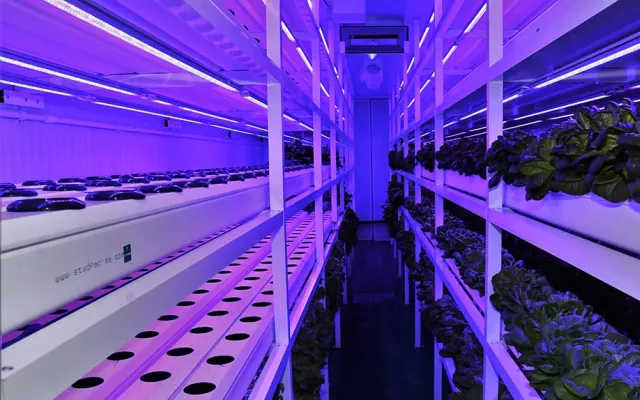How biosaline agriculture is helping Bedouins settle down in Jordan
10 December 2018
For many years now, residents have been leaving Al Husseinyieh District in the southern Jordanian steppe due to its desert climate, barren land and scarce water.
But that was not the case for 50-year-old Mr. Hamad Thiabat Al Jazi. After serving for years in the army and then working at the Ministry of Water and Irrigation of Jordan, he decided to return home despite the challenging life back there.
He returned to pursue a project started by his father more than 18 years ago. The Bedouin resettlement project aimed to encourage local people to work in agriculture.
“Several years ago I attended a field tour at Al Showbak station affiliated with the National Center for Agricultural Research. The field tour was organized in cooperation with the International Center of Biosaline Agriculture (ICBA). It was about the techniques of biosaline agriculture. It was there that I found a solution to overcoming water scarcity in Al Husseinyieh District and high soil salinity,” he says.
“At the beginning I preferred to try the techniques of biosaline agriculture on my own land, so I planted 0.2 hectare of land with alfalfa and barley. After the harvest at the end of the season, the result was so good that I decided to plant another 3 hectares of land in the next season,” he continues.
Mr. Hamad Thiabat Al Jazi, who started working in the cooperative and agricultural sector around two decades ago, belongs to the new generation who revived agricultural life in the district. He is currently running a project that his father started in 1970, which seeks to resettle nomadic Bedouins through agriculture.
The project has helped to transform Al Husseinyieh District into a residential area. Many district residents are now working in agriculture, especially in biosaline agriculture.
Today the local population numbers around 17,000 according to the figures of the Jordan Department of Statistics. People are shifting their attention to feed production using biosaline agriculture. Mr. Hamad Thiabat Al Jazi notes that the success of his farming operation, which started around three years ago, has encouraged tens of the district’s men to return to their land.
“Previously the area was slowly deteriorating as land owners leased their land to other people who paid no attention to the local infrastructure,” he says. “This prompted the local people to take an important decision to go back to their land, invest in it and take care of it.”
“My experience with biosaline agriculture was inspiring to them to return. Now they are happy and none of them is leasing their land to others or deserting it, especially given that they have learned a harsh lesson as a result of abandoning and leasing the land,” he continues.
“Organizing field tours helps a lot to promote biosaline agriculture, especially if participants can see some projects on the ground,” he notes, pointing out that biosaline agriculture is well suited to Al Husseinyieh District with its high temperature and saline soil and water.
“Such features help a lot in terms of increasing the output of fodder production, and this is what I realized while cultivating my 3-hectare plot. The success prompted me to distribute some of the seed to other farmers in the district under the Tal Barma agricultural project which I am running.”
“My middle daughter decided to study agricultural engineering and specialize in soil and water so that she would assist me in cultivating other plots using biosaline agriculture, especially given that the output would be around 40 percent more.”
Today biosaline agriculture is taking off in several governorates in Jordan, especially where water is running out due to water overuse and low precipitation.












